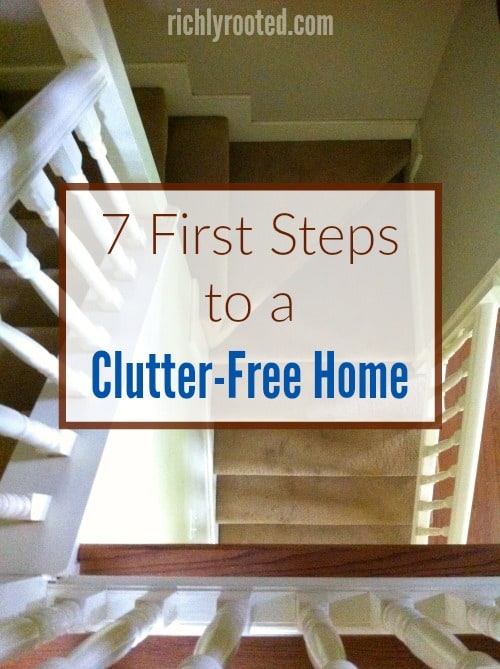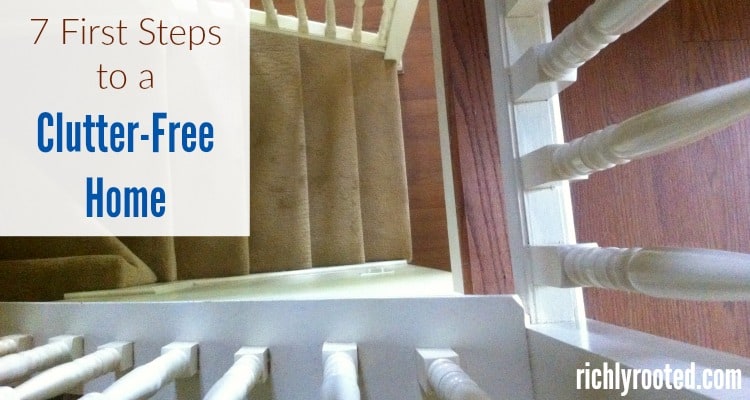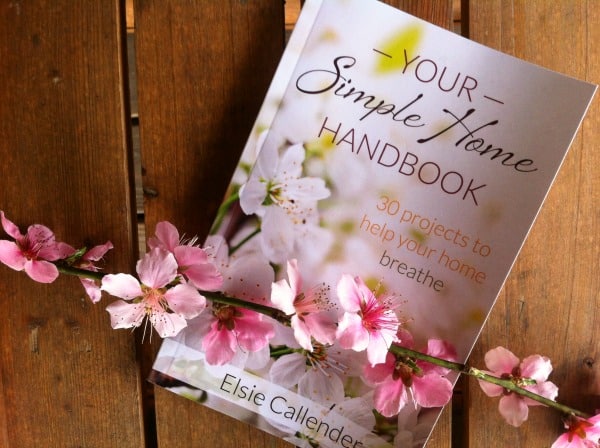7 First Steps to a Clutter-Free Home
Declutter with a plan! Here are 7 steps to help you achieve a clutter-free home. Regardless of how much stuff you have or the size of your house, these steps are a good place for any homemaker to start.
You can dive into decluttering haphazardly, enjoying temporary satisfaction from your efforts, or you can declutter with a plan, transforming your home into a space that breathes personality and welcome.
I’ve taken both approaches, and it’s no surprise I prefer the latter! Systematic decluttering takes longer and requires more work, but it will permanently change the way you view stuff, alter your spending habits, and even make you a better homemaker!
These 7 first steps to a clutter-free home will help you lay the groundwork for all the sorting and purging to come.
7 Steps to Declutter Your Home
1. Get motivated
It’s hard to make any headway with your stuff if there’s no spark inside to get going! If you know you have a clutter problem but you can’t seem to make headway, then start reading. Read blogs and books about decluttering and simple living. The atmosphere will rub off on you! Some of my favourite sources of inspiration are the blogs Small Notebook (no longer active) and Slow Your Home. And of course, you can always pick up a copy of my own book, Your Simple Home Handbook!
2. Change your mindset
If you want to get past surface clutter and do a deep purge, you need to adopt a radical mindset towards decluttering. Don’t make the same mistake I did and think that sorting through a box and pulling out a handful of items to give away counts as decluttering! When you simplify your home, be prepared to examine every item you own, carefully weighing its value and deciding it it’s really, truly useful or beautiful to you.
3. Map out what you want to declutter
Get very specific about what spaces in your home you need to declutter. Get a pen and paper and literally walk around your house and divide your home into zones. Depending on how much stuff is in one room, you might need to break it down into separate zones. (Instead of “living room” put entertainment center, bookshelves, piano area, etc. Instead of “kitchen” write counters, cabinets, drawers, etc.) Put the list on your wall or tuck it inside your planner and check off each zone as you simplify.
(I divided Your Simple Home Handbook into 30 different areas and included a checklist in the back of the book.)
4. Put decluttering on the calendar
You have to make time for decluttering, or it probably won’t happen any time soon. Look over your calendar for the month ahead and schedule in a few decluttering sessions. If you have young children, don’t declutter when they’re around. To declutter thoroughly and effectively, you need to be able to focus. I’ve found that Sunday afternoon is usually a good time for me to simplify. You could also try going through cabinets and closets in the evenings, after your kids are in bed. It might not be an appealing prospect initially, but once you begin you’ll likely catch your second wind and enjoy the evening purge session!
5. Designate a halfway spot
You need a specific place where you’re going to keep outgoing items that you’ve decided to purge. It should be in a central location: out of sight but easily accessible. A large kitchen trashcan lined with a trash bag works great for holding the items–tuck it inside the hall closet, in the laundry room, or in another spot where it’s not going to be an eyesore but you won’t forget about it. When you have a decluttering session, grab the trashcan and fill it with your cast-offs. If you come across any unwanted items during your day-to-day, add them to the trashcan. When the can is full, tie off the bag and make a trip to the donation center!
6. Make a plan for the paper
Of all the clutter that enters our homes, paper seems to pile up the fastest. If you can put a strategy in place from the get-go for handling incoming paper, you’ll save a lot of time down the road. The best strategy I’ve ever come across for dealing with paper comes from an excellent book called The House That Cleans Itself. The author, Mindy Starns Clark, recommends a method called “the paper two-step.” In her method, you quickly sort all incoming paper at (and only at) a designated paper station. This is done daily. Then, once per week, you do a slow sort where you clear out all the files and cubbies in your paper station and take care of the items that require more time to deal with.
I also like this post at EarlyBird Mom for more paper strategies!
7. Start with your own stuff
You might lament the fact that your family is not on board with your decluttering vision. They don’t need to be. Not yet. You probably have enough clutter of your own to deal with, so start with that–your wardrobe, makeup drawer, desk. Eventually, your family will notice. They might be inspired to join forces with you and declutter their own space, too, or they might remain packrats. Either way, if you focus on your personal space first, your home will already be vastly more clutter-free than it was to begin with.


